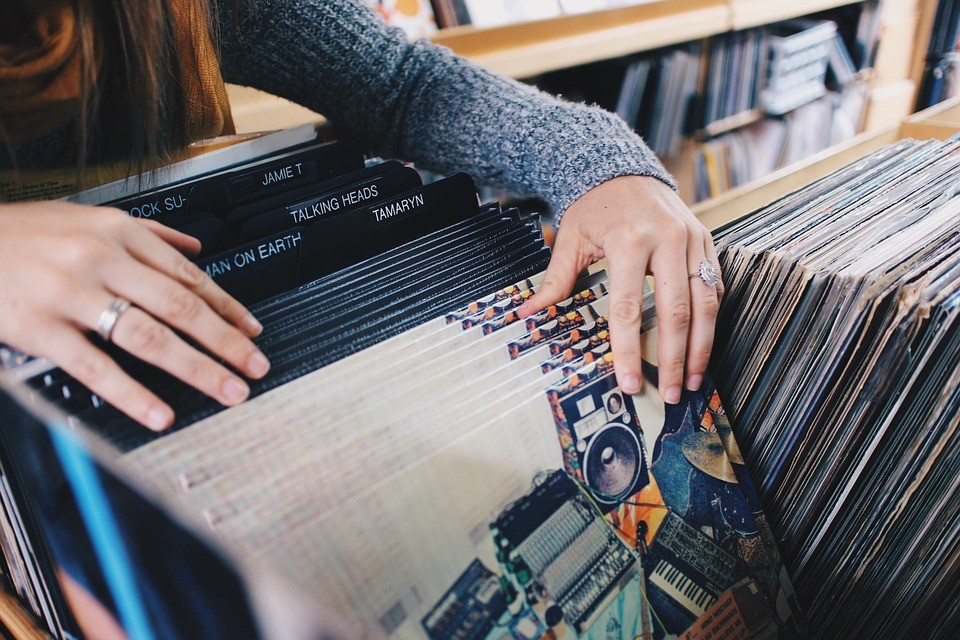Jazz Corner: Vinyl and The Rebirth of The Long-Playing Record
The 12” vinyl became a standard vehicle for recorded music
A friend called the other day, in pre-COVID-19 times that is, and said he had a bottle of South African wine which would go perfectly with jazz heard on vinyl. Could he bring the bottle over? Could we have a vinyl jazz listening session? A really good idea, sirjee!
Now my friend is very well-traveled and is a man of eclectic taste. He has been to several jazz festivals around the world and has an impressive collection of jazz. But that is almost a totally digital collection with plenty of compact discs and hard drives.
We had a great session of listening to jazz on vinyl, and he was right: That wine was well paired with the jazz that evening. Maybe a mellow red goes well with Bill Evans, Miles Davis and Ella Fitzgerald. The experiment is certainly worth repeating soon!
The experience of listening to music on vinyl discs is enhanced by the artwork on the album cover, the details of all the performers on the album, and not least by the liner notes on the back cover with details of the recording and the performing artists.
Music on vinyl, particularly jazz and rock music has become increasingly popular with listeners and buffs of either genre. I understand that more vinyl than compact discs was sold last year for the first time since 1989.
I have, almost by default, a reasonable collection of jazz long-playing records (popularly known as vinyl in current lingo because of the material they are made of), collected over a period of time when it was the only medium in which music could be purchased.
There is a fascinating history involving the amateur music collector and the options available to own a recording.
In the post World War II era in the 1940s, when a fairly primitive shellac disc, both heavy and fragile brought records to the public, rapid strides in technology have been paralleled in the music industry, bringing newer and better sound delivery to the listeners.
The 10” shellac disc with just one three-minute song on each surface was played on a hand-wound up gramophone with a rotating plate going around at a furious 78 rpm with the sound delivered by a brass horn. I am sure most readers are familiar with a picture of this device. It is also the photo identity of the HMV record label where a dog is seen looking curiously at the horn!
The development of a newer plastic, vinyl, was a revolutionary breakthrough in the recording business. It resulted in the creation of the long-playing record, 12” in diameter, played at 33 1/3 rpm and a smaller 7” extended play (EP) playing at 45 rpm, designed mainly for the very popular “jukeboxes” of the Fifties and Sixties, consoles in restaurants where a chosen song could be played by putting a coin in a slot.
The 12” vinyl became a standard vehicle for recorded music, with periodic improvements in the quality of sound, giving rise to the concept of Hi-Fi, standing for high fidelity, where fidelity does not refer to one’s allegiance to Cuban leader Fidel Castro!
This brought in an acute awareness of the quality of reproduced sound on one’s music system and gave rise to more complex and sophisticated equipment for listening to one’s music. Soon there were two types of listeners, one listening to the music and the other listening to their equipment! But nobody complained.
Like the “space race” came the race to deliver “better” sound from the medium. Record companies came up with the CD (compact disc) and boasted of the ultimate quality of sound. (The cassette tape also entered the music listening scene; it boasted of portability of music rather than quality).
CD manufacturers claimed that this new digital sound was free of the “snap, crackle and pop” associated with the long-playing vinyl record, those coming from scratches on the LP surface. This was true to some extent – but more a case of marketing brainwashing – and the market switched considerably from vinyl LPs to CDs.
A couple of decades into this new digital medium made record manufacturers aware that they were making considerable commercial losses since CDs could be easily ripped off. Back to the drawing board!
A race for new technology for returning to the vinyl medium brought to the market a new generation of turntables for playing vinyl LPs and also a more sophisticated LP quality which came at a large cost to the end-user.
While the quality of sound from this development is very satisfying, one wonders how much of a marketing ploy this might be to augment the dwindling bottom line!
The trend now has swung back heavily in favor of vinyl and the fervor of new vinyl collectors echoes that of a few decades ago. Today, we have some dedicated, hardcore vinyl collectors, vinyl listening clubs and several new music releases in the vinyl LP format.
So, does vinyl deliver a nicer sound of jazz than the near disgraced compact disc? Can the human ear actually tell the difference? Does vinyl give a listener less aural fatigue? Does vinyl give you a live auditorium feel?
Who knows for sure, although some swear by their LPs.
I just sit back and listen to the sounds of jazz and concentrate on enjoying the music, not necessarily the medium.
I know for sure that jazz sounds much more mellow with a South African red in hand. Actually, it doesn’t really matter where the wine has come from…
Sunil Sampat is a jazz critic and Contributing Editor of Rolling Stone India. Write to Sunil at jazzwala@gmail.com








